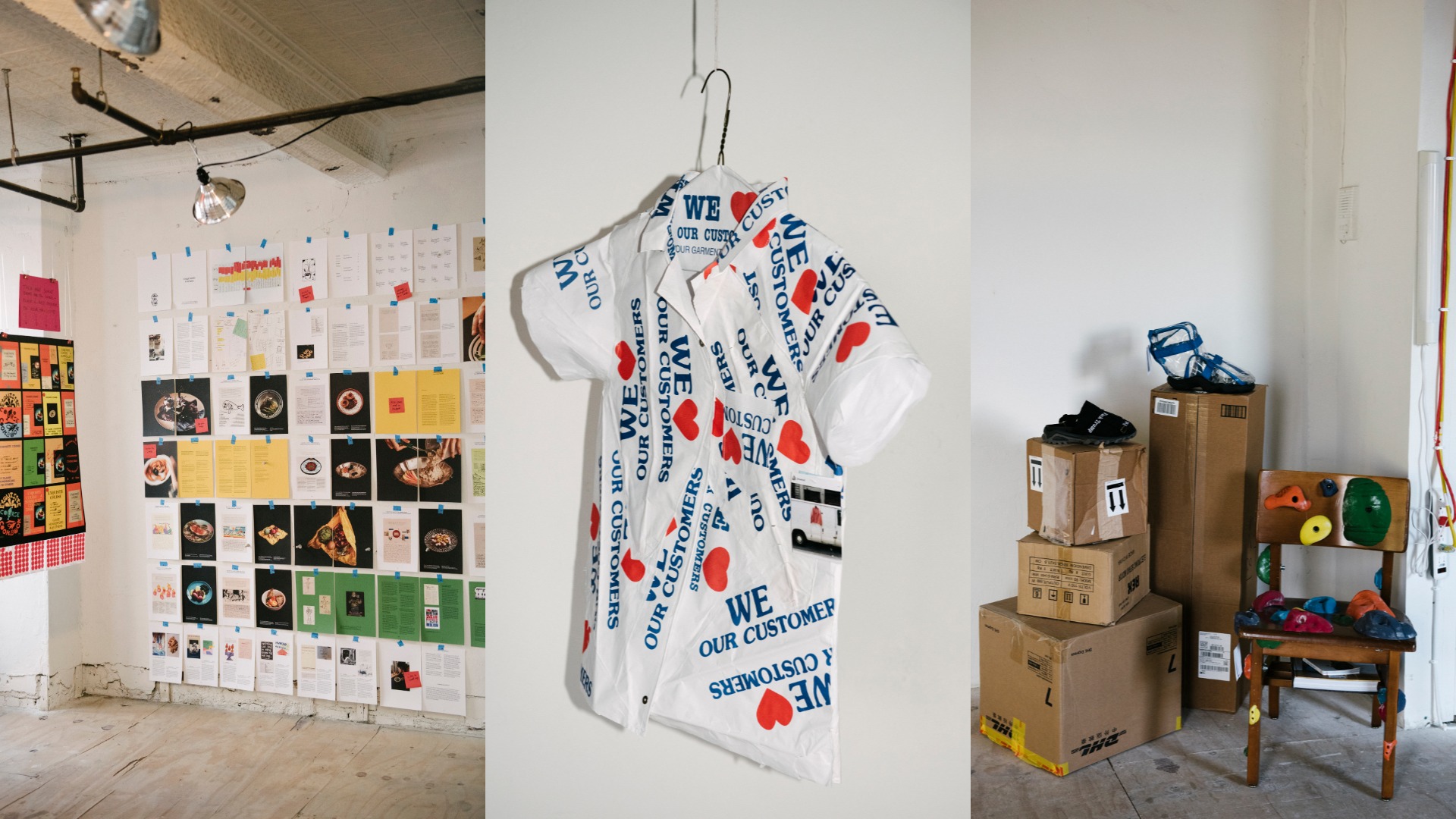There were children yelling in the 8-Ball Community gallery space in New York’s East Village. As adults bustled around chatting, drinking wine, and looking at art, two children were playing on a curved blue bar, raised a few feet off of the ground. One of the kids swung on the bar, jumping up into the air and slamming his feet down onto the ground. Both of them laughed, repeating the gesture again. It felt communal.
Jim Walrod, the interior designer whose legacy inspired the night, would have likely been pleased. Born in Jersey City, the designer became the “furniture pimp” for Mike D of the Beastie Boys, logged time as an assistant art director of Fiorucci, and designed the lobbies of The Standard LA — Steven Soderberg’s film The Girlfriend Experience heavily features his designs for Gild Hall, a hotel in the Financial District. But, he was also known as a connector, pairing his friends off with others they might find of interest or valuable down the line, and Daniel Castillo had made the piece of public seating the children were playing on, specifically in memory of Walrod.
“Jim always had some sort of friend that he needed to introduce you to that was the most amazing person,” chef Laila Gohar, a friend of Walrod, tells i-D. “He had no formal training or education in design, but was very hungry for life and read a lot and watched a lot of films — he really self-educated in a way and was really generous with his knowledge and with his connections of things.”
To honor that, Gohar, her husband Oscar Sosa, Jim’s sister Kathleen Walrod, and more, worked to establish Jim’s Web, an artist fund and mentorship program that awarded six artists with mentors as well as a $3,000 grant. The fund itself was established after Kathleen donated the money raised by auctioning off Jim’s book collection. From there, the group chose topics that were of interest to Jim, and experts within those topics from Jim’s peers.
“Each mentor selected their favorite [applicant] based on Jim’s taste,” Lele Saveri, co-founder of 8-Ball Community says. There were over 350 applicants. “They tried to think of what Jim might like out of all these people.” The result, came to fruition in Sunday’s exhibit.
“I only saw the work three days ago completed, and it just seems like the aesthetics and things Jim was about,” Vireli says. “So it’s about living in the street, living in New York, and being a creative person who isn’t doing it for the hype, but for the art.”
Here, we talk to the grant winners about the works they created, and the advice they received along the way.
The closing reception will run from 6-8pm on 11/07/19, 59 E 4th St., Buzzer #14, New York.

Daniel Castillo — Product Design
“This is a piece of public seating that is pretty much just meant to bring people in the way that Jim did,” says Castillo, who is a graduate of the Rhode Island School of Design. The designer and photographer was putting the finishing touches on his piece even as guests began to come in, finishing only about 10 minutes before kids began to jump on it. “I document ad hoc public seating around the city and am attuned to how people gather on stairs and that kind of stuff. In my proposal, I wrote about seeing Jim at a park on Mulberry and Spring, hanging out on a jungle gym — in New York, you kind of take what you can get, public seating is tough.” This piece, which came to fruition through some mentoring from Leon Ransmeier and Tiffany Lambert who encouraged him to “design for use.”

Kimari Hazward — Photography
With his “Air Flowing From A Candle Heavier Than The Wax Burnt Through,” series, Hazward photographs solitude and the stasis that comes with it. To do so, his images — and the still in-progress video of the same name — depict the home he grew up in as well as his mother and grandmother. “I wanted to personify the house as a person and an object,” Hazward says of the process which was also informed by looking at other photographers like Sophia Holton. “[In this] the house is something that retains and expresses lived experiences.” For him, mentor Jeremy Liebman helped on the technical side of art, as Hazward is self-taught.
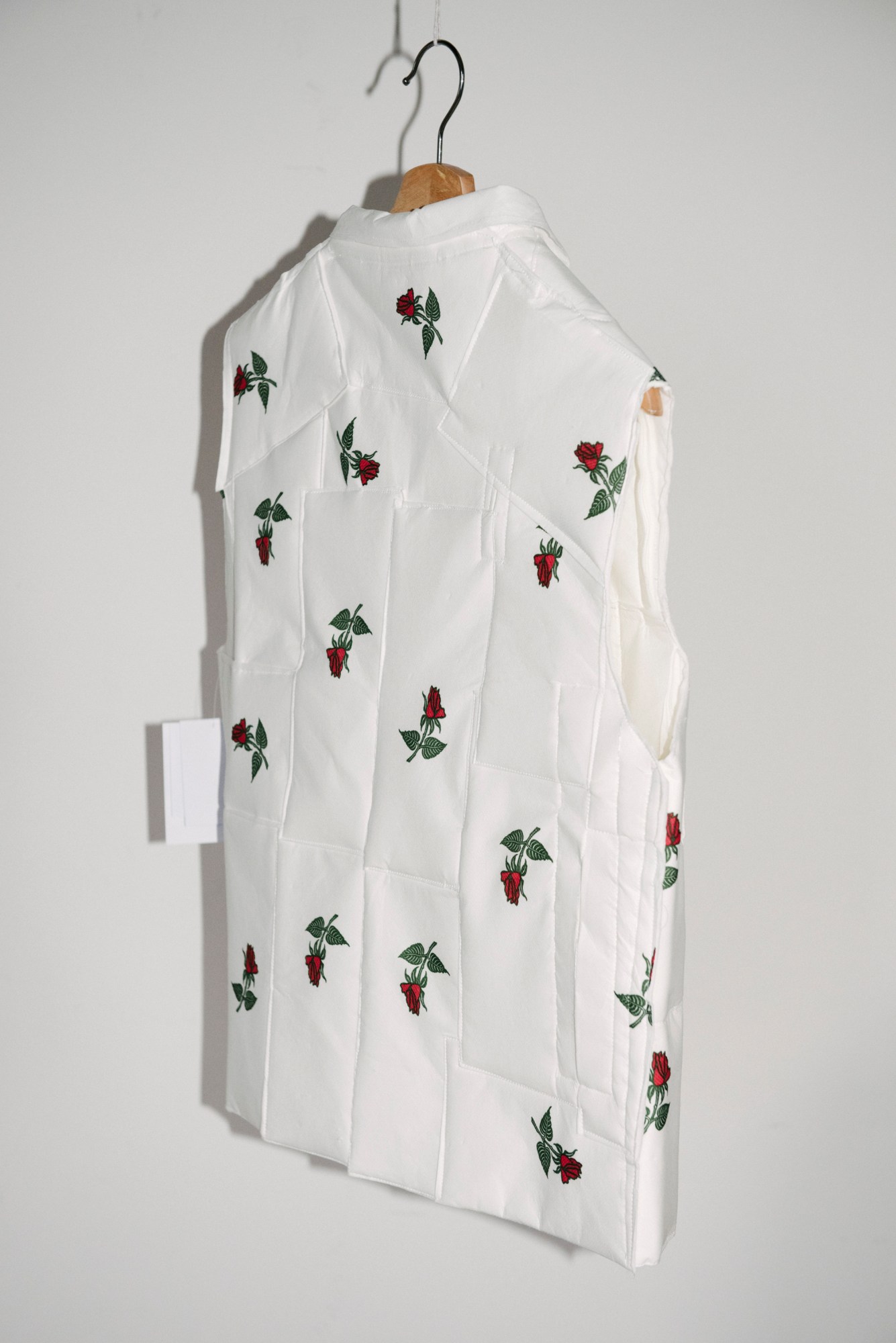
Nicole McLaughlin — Fashion
McLaughlin wanted to get to know Jim. “Cynthia [Leung, my mentor,] set me up with a lot of Jim’s close friends,” she says of how she went about it. And though their perspective was key, she also wanted Walrod’s own perspective of himself. “So I went to his Instagram which was, apparently, something he used a lot and was always connecting with other people on.” There she found hundreds of photos of New York City, which she used as inspiration for upcycled garments. She turned napkins and hangers from a dry cleaner into shirts, and hats into a “Fuck Trump” embroidered sandal. As a central piece, she created a chair, studded with rock climbing pegs: “The chair was actually, if Jim and I had a collaboration, what it would be. I’m very into rock climbing and he designed interiors so I thought it was perfect.”
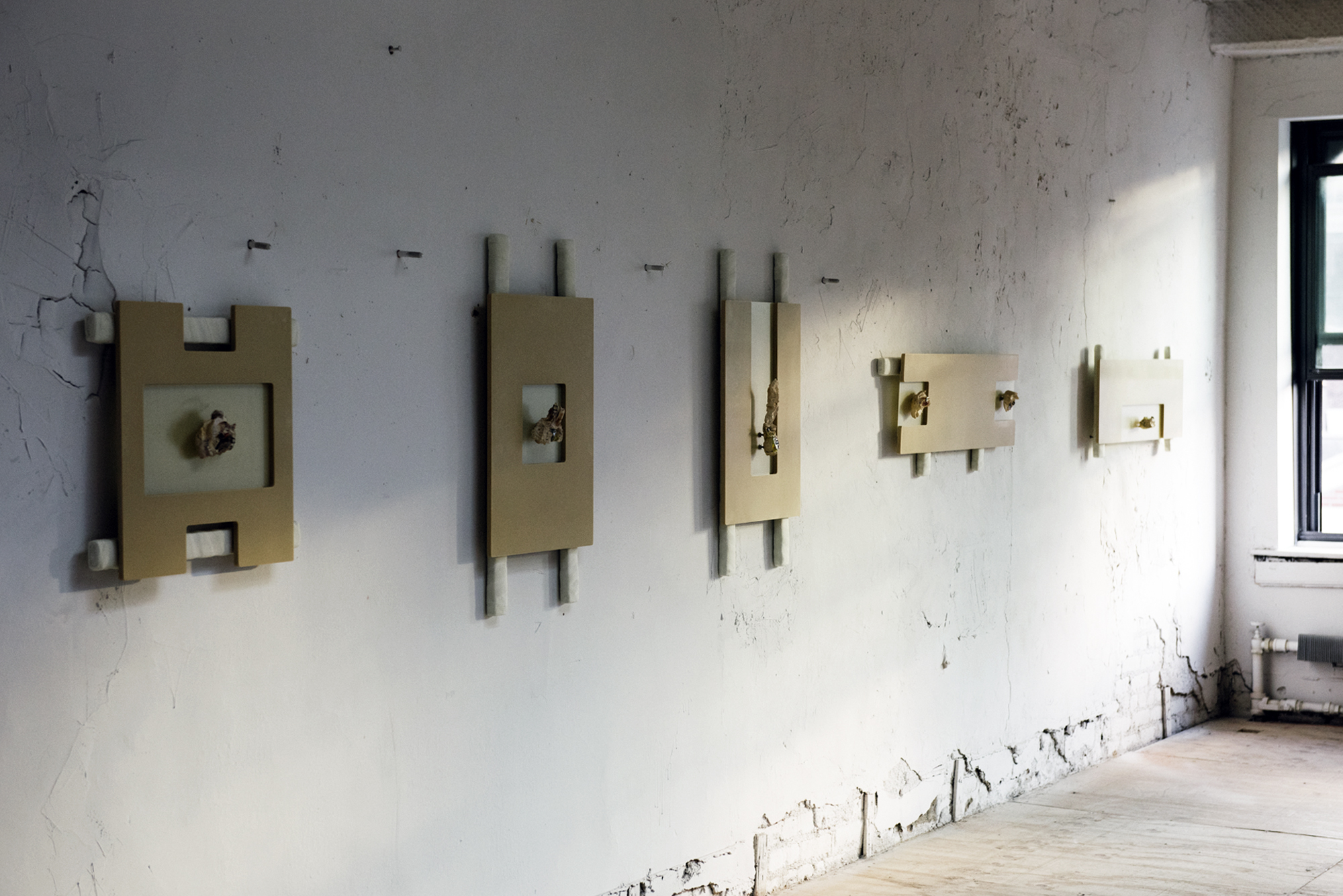
Kristen Wentrcek and Andrew Zebulon — Fine Art
Mounted on one of the walls of the space are six sculptures that revolve, essentially, around mouth retainers. “We’re really talking about the old school retainer with the wire and the acrylic,” Zebulon clarifies. “We started talking about how those materials make you feel and that’s like a lot of what we are often looking at — is how you can use a material outside of its context, but bring that along subconsciously.” So the retainers were twisted and distorted around similarly reworked molds of the teeth of both Wentrcek and Zebulon. “I think we wanted to isolate chaos and also juxtapose it with something that was more organized,” Wentrcek said. Both pointed to Landon Metz’ mentorship and his questioning of what they were doing and why as important.
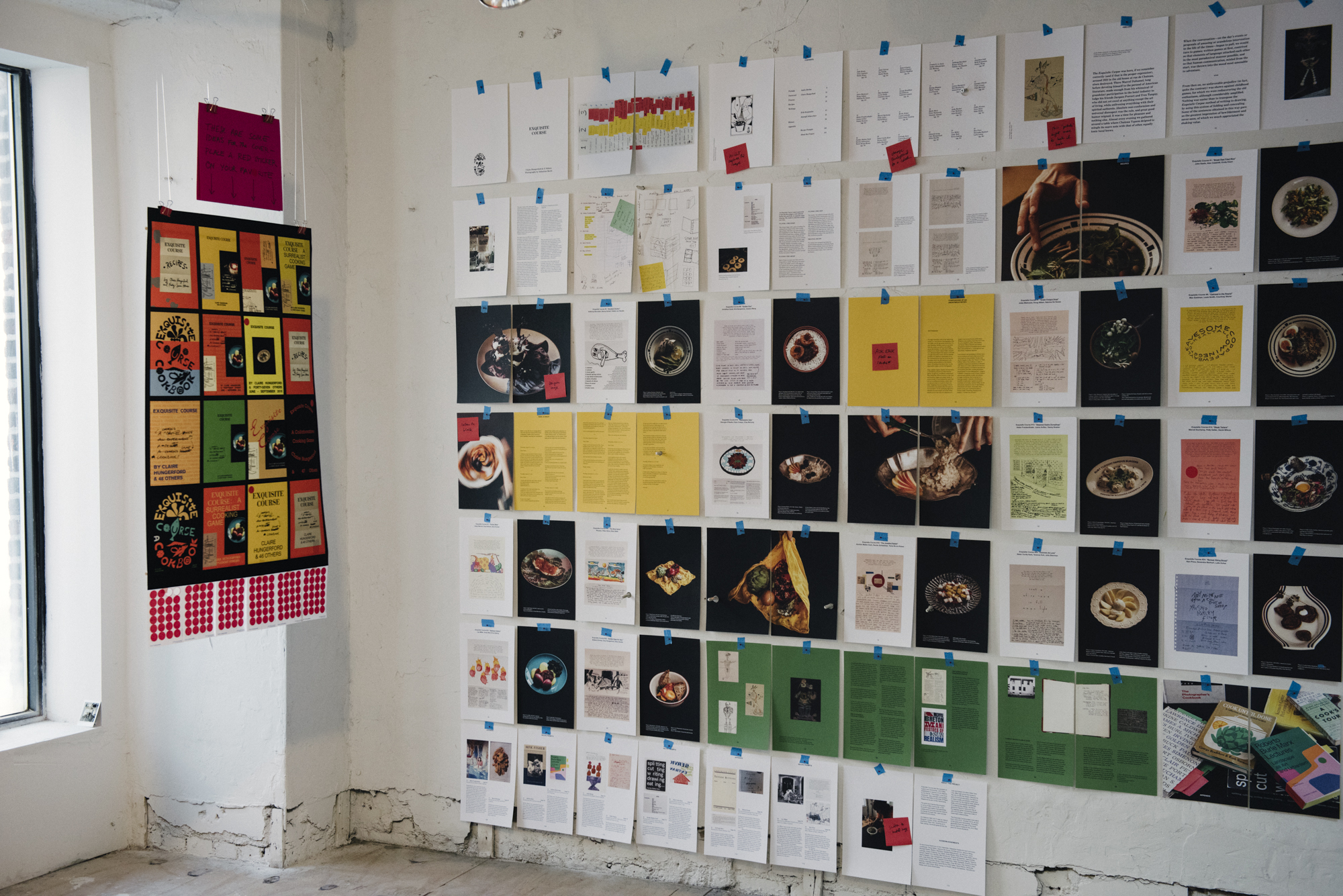
Claire Hungerford — Publishing
Hungerford’s project was inspired by a game. “It’s based off of the surrealist drawing game, Exquisite Corpse!” she says. In that game, which Hungerford played as a child, three players collectively draw a creature, each adding on to what the person has drawn before them, without seeing what was drawn. In this same way, Hungerford has created a book of recipes inspired by a group of influential people.
“There was an instance where I was reading Ursula Le Guin, who’s a recently passed away science-fiction writer. In her book The Left Hand of Darkness, she describes a buffet on this planet and it’s so weird, and I was like ‘That’s a prompt!’” The ingredients from that buffet were sent to an artist named Isabelle Albuquerque who added to them and eventually ended up in the lap of a chef who composed it all into a recipe for a cake. Hungerford says her mentor Kim Hastreiter helped her with editing. She hopes to publish the book and donate the proceeds back to the fund.
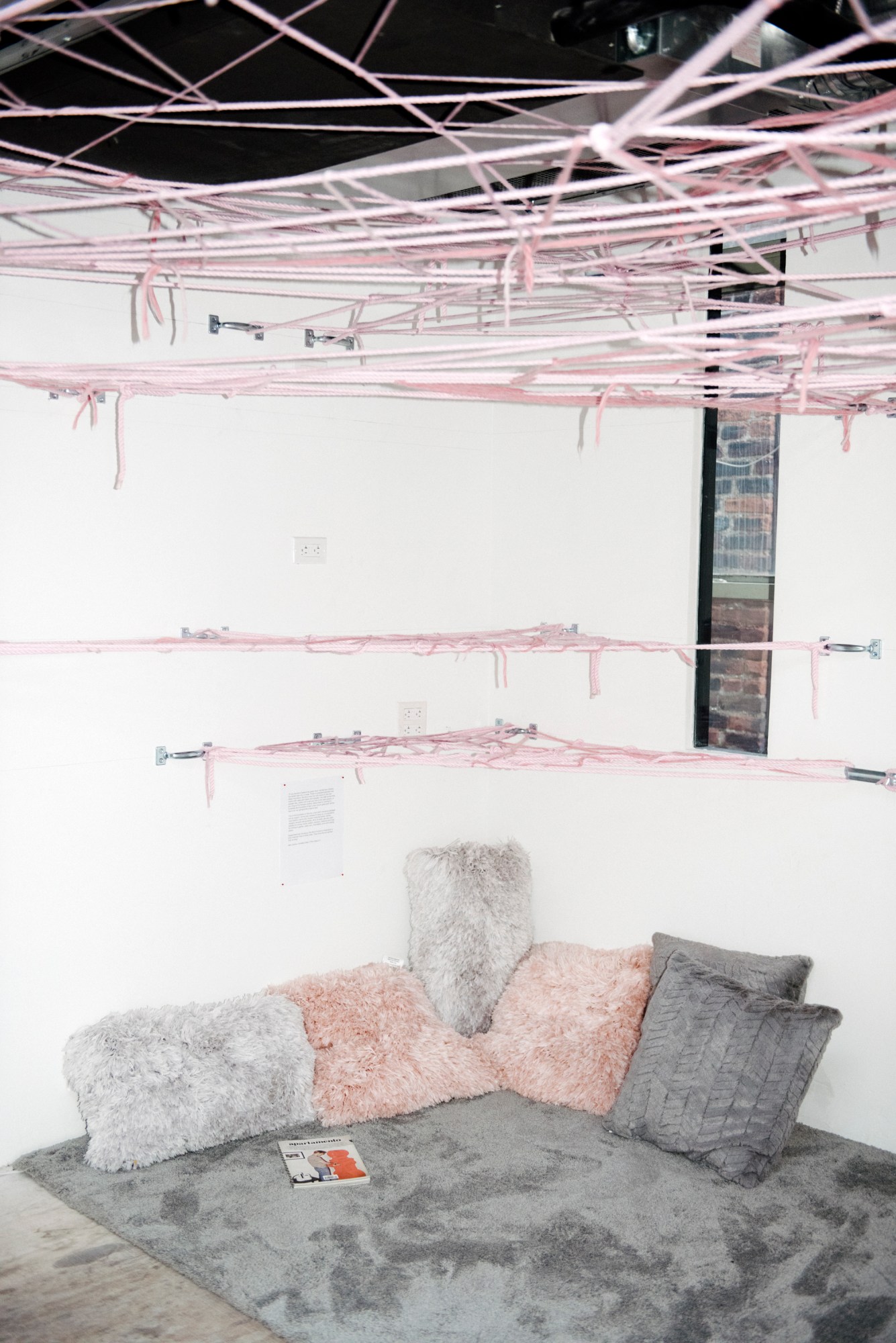
Tova Kleiner — Architecture
Though Kleiner’s work, “Passage and Support,” looks like a literal interpretation of the fund’s name, it is actually a reference to one of the 17-year-old’s pastimes. Growing up, she used to take string and attach it to various pieces of furniture in her room, creating elaborate webs. That idea, now comes as an installation, replete with three different types of yarn to add texture and seating by way of pillows, a rug, and a handful of chairs.
“I wanted to revisit [this] in part because I think it was just an interesting thing I did, but I also think it informs a lot of the work that I do now with line and how I view things: I see things through webs,” Kleiner says. It’s also an opportunity to look back at her childhood as she becomes an adult.
Kleiner says that her mentor Dong-Ping Wong provided a lot of practical advice that helped move the project from initial concept to the final install.

Kathy Walrod — Jim’s Sister
“I knew that I needed to do this program to honor Jim, and to honor the mentors who helped him over the years. Jim was very brave, in that he reached out to people whose work or talent inspired them. He needed to know them and to tell them how much they inspired him. Many of these people started as Jim’s mentors and of course, ended up as his dearest friends. Many of us admire from afar — Jim jumped in, and after coming to know and work with many people whose work floored him, went on to introduce other creative people to them so they could have access to their wisdom and knowledge. Jim’s text messages were filled with introductions! Things like [to a gallery owner] — ‘This is my friend Katie Stout. She makes amazing lamps that must be seen!’ Of course later she had a show in that gallery.
Jim had an incessant need to know about the designs, art and books that he loved. He was interested in Italian design, of course. He read everything on the subject, reached out to the artists and then shared that knowledge with all of his friends and family.
One of the things that I have always said in thinking about Jim and discussing this with him was that most people live to work while Jim worked at living. Taking the time to go to the small art show of a new artist and then talking up their work. He did this with established underdog artists as well. He used Lee Friedlander’s photographs in the Thompson LES, bringing recognition to an older less well known artist.
Jim had a real need to see people recognized for their work and to spread the news of talented creative people. I know that if he were with us, he would still be connecting people and would be proud to help with the work of the people in this program.”
